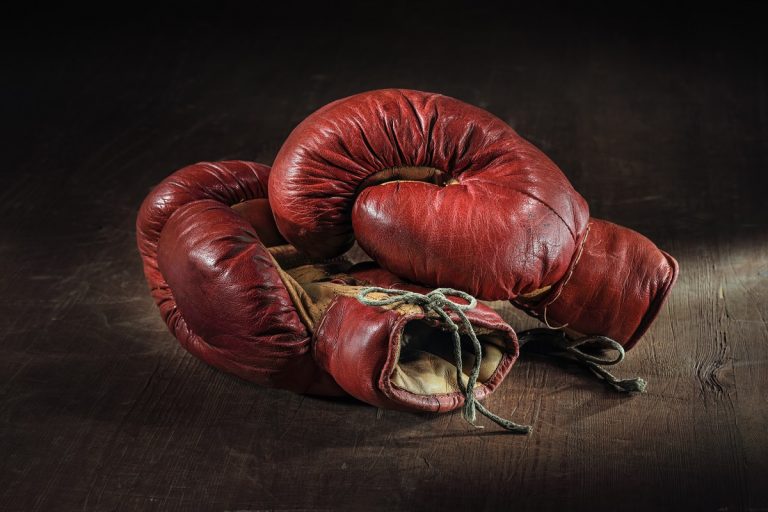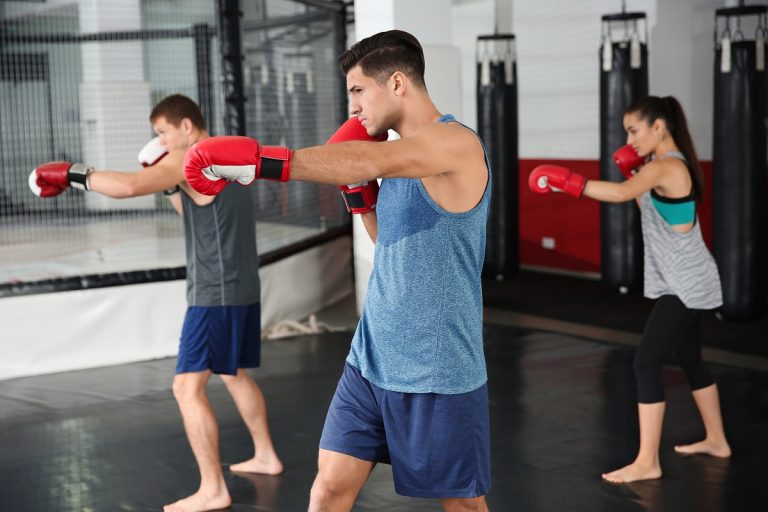How Long to Get Blue Belt in BJJ?
“Are you concerned about how long it takes to earn a blue belt in BJJ?”
According to most BJJ coaches, the path to receiving a blue belt can require any time between a year to three years for most students. But, there have been cases where students attained the blue belt sooner, and others achieved it later.
Getting a BJJ (Brazilian jiu-jitsu) blue belt requires training for a specific period and mastering several fundamental techniques. It would help if you convinced your coach that you’re prepared for a blue belt by meeting the prerequisites, which vary with the BJJ school. For the most part, mat time is a crucial element that you may exploit, and it’s among the simple strategies to improve and move forward in BJJ.
Summary — How Long Does It Truly Take?
Most times, the time spent to acquire a blue belt in Brazilian jiu-jitsu ranges from one to three years. Still, the duration generally depends on the BJJ student in question.
Achieving a blue belt is one of the most demanding aspects of learning Brazilian jiu-jitsu. For starters, the journey requires commitment, tenacity, and a thorough knowledge of the foundations of grappling. This knowledge will determine how much time a student spends to earn their blue belt.
It’s essential to remember that acquiring a blue belt calls for mastering a few well-known moves first.
Some of the critical techniques include:
- Basic self-defense strategies
- Takedowns
- Escapes
- Judo throws
- Guard passes
- Sweeps from guards
- Basic solo drill movements
- Submissions from guard
We’ve provided some procedures that can speed up the process of getting a BJJ blue belt and beneficial tips to keep in mind as you strive to earn this title. Also, we’ve identified several elements delaying BJJ students from obtaining a blue belt.
What Does a BJJ Blue Belt Signify?
An individual with a blue belt in Brazilian jiu-jitsu has mastered submission grappling at an advanced level. The capacity to detect and comprehend BJJ positions distinguishes a white belt from a blue belt. Additionally, blue belt holders can control their anger and degree of exertion during a battle.
Blue belts have a far more profound grasp of who they are; they’ve encountered more critical circumstances, both positive and negative. Moreover, Brazilian jiu-jitsu presents mental, emotional, and physical challenges.
Why Does It Take So Long to Acquire?
(Blue Belt Techniques You Must Learn)
Although each institution has a few unique requirements, their fundamental standards are often the same. White belt students at every school must grasp various skills before obtaining their blue belts.
The complete list of skills a BJJ student should master to become a blue belt includes:
- Submissions from guard: A blue belt in BJJ must know how to execute submissions from the guard properly. The armbar, guillotine, triangle, omoplata, and kimura are some of the most crucial submission techniques. In addition, gi chokes could take the form of a lapel or cross choke.
- Sweeps from guard: BJJ blue belt students need to be familiar with a variety of sweep from guard strategies, such as scissor, flower, butterfly, hip-bump, and spider.
- Guard passes: A potential blue belt holder must be skilled in guard passes. These techniques include passing closed guard, De La Riva Guard, spider guard, and open guard.
- Takedowns: They must know some takedown methods, such as double- and single-leg takedowns and other fundamental takedown methods.
- Judo throws: Blue belts should be versed in at least three fundamental judo throws. For instance, Drop Seoi Nage, Koshi Guruma, and Osoto Gari.
- Escapes: Blue belt holders must be able to escape tricky situations. These include elbow reversals and escapes from side mount and mount.
- Basic solo drill movements: Another need for white belts advancing to blue belts is the ability to do fundamental solo drill movements — technical get-ups, front rolls, and elbow escapes.
- Basic self-defense techniques: Blue belts must fully understand how to apply BJJ in crucial self-defense circumstances. Every BJJ practitioner should be able to counter punches, back takes, and grabs.
How Long Should You Practice to Receive a Blue Belt in BJJ?
A BJJ amateur may have to train for one to three years to earn a blue belt. However, the typical period to reach a blue belt is one to one and a half years. This transition period in BJJ could extend in some situations.
How to Earn a BJJ Blue Belt in a Year
White belts must complete several assignments to receive their blue belt within one year.
Here’s how to obtain a blue belt in a short period:
Train Regularly
This tip is one of the most potent catalysts in your BJJ blue belt journey. You must practice BJJ as often as possible if you desire to earn your blue belt promptly.
On average, BJJ students take two classes a week. However, if you’re committed and have the time, three or more weekly practices are preferable.
Meanwhile, training extends beyond simply attending classes. You also have to invest your extracurricular time into fitness and practice.
Compete
This angle doesn’t apply to every school. But, it’ll undoubtedly aid your attempts to earn a blue belt.
Competitions are a realistic and active assessment of your abilities. By proactively competing, you may demonstrate the necessary skills to achieve a blue belt.
Although it may boost your confidence, winning competitions isn’t that crucial. Your coaches are looking for your dedication to BJJ and zeal to improve.
Avoid Getting Injured
While it may sound like weird advice, try not to get wounded. Be cautious because a severe injury could further lengthen getting your belt by a year or more. Your wait time will increase if you experience sidelining due to an injury.
Factors That May Delay Earning a Blue Belt
Some factors can accelerate the process of earning a blue belt, while others might delay it.
The following situations might cause you to wait longer than expected for your blue belt.
Lack of Consistent Training
If you don’t practice regularly, it’ll take you longer than a year to achieve a blue belt. White belts that only train once a week or less have to wait longer for a blue belt.
This delay occurs due to infrequent practice — a consequence of a lack of commitment or a demanding private life. As such, the wait for the blue belt title becomes longer.
Injury
As earlier stated, try your best to avoid sustaining injuries since it’ll be awful if you do. Injuries can confine you to the sidelines and prolong your term as a white belt. Although you may agree you’re not to blame for an injury, martial art doesn’t see it that way.
The only thing you can do in such a situation is to wait patiently and return to practice as soon as you get better.
Change in Location or School
Changing your present BJJ institution or present area may pose an unfavorable consequence. It may take a significant period for you to properly and fully adapt or locate a new school when you relocate to a different location.
Similarly, the time extension degree also depends on whether the new BJJ school has different criteria for earning a blue belt.
Family
Starting a family can substantially affect how long it takes to get your blue belt — particularly if you’re getting married or expecting a child. Your return to practice will be postponed if you’re an expectant parent.
You’ll also have to split your time between attending to parenting needs and practicing. This fact can be confirmed by those who’ve been in such a circumstance.
Factors That May Hasten Acquiring a BJJ Blue Belt
Two specific elements primarily facilitate your pursuit of a blue belt in BJJ. They include:
Past Experience
Suppose you’ve undergone earlier training in a sport involving grappling your opponents, such as no-gi jiu-jitsu, judo, or wrestling. In that case, the basic principles of BJJ are already imbued in you. So, you’ll only require a few adjustments to get a blue belt.
Talent
Talent is something you don’t learn. Some people naturally excel at BJJ and move through the ranks more quickly than others. As such, they do well in both competition and class.
If you’re fortunate to belong to this group, your journey towards a blue belt in BJJ will be easier and faster. Regardless, keep practicing.
Tips for a Fast-Paced & Efficient BJJ Blue Belt Title Training
As you train for your blue belt in BJJ, you need to make several considerations.
The following tips will help improve the attitude of a BJJ student striving for a blue belt:
Practice Regularly
You must engage in constant training if you want to earn good grades in any BJJ school. Remember that investing time in your practice is one of the most crucial things you can do to move up the levels. Therefore, putting more time and effort into your training will considerably benefit you.
By this action, your coaches will see you’re committed to obtaining your BJJ blue belt, much more in the shortest time possible.
Aim to Improve Your Rolls and Technique
When in class, pay greater attention to the rolls and technique. Don’t exclusively concentrate on the belt. Since you don’t know exactly when it’ll arrive, don’t overly worry about it.
A belt isn’t as significant as your rolling skills and general performance. You can improve your BJJ art with every technique and roll, underscoring the need to pay attention to that.
Remember It’s Only a Belt
In the end, the belt is only a component of the attire. The belt’s relevance decreases as you invest more time in your training. It’s crucial that you continually practice and constantly try to get better at your technique.
Enjoy Brazilian Jiu-Jitsu
Keep in mind that Brazilian jiu-jitsu is meant to be enjoyed. As soon as you start limiting it to getting belts, your enthusiasm will begin to wane. If you’re not enjoying BJJ, you should reconsider your opinion about the sport.
Conclusion
Various elements can affect how long it’ll take you to earn a blue belt title. However, it would be best if you weren’t too concerned about how much time it takes to attain a blue belt. Instead, you should fully concentrate on your practice and endeavor to relish the experience.
FAQ
Is it difficult to achieve a blue belt in BJJ?
Typically, obtaining a blue belt in BJJ isn’t difficult. Still, you must spar, which requires a high degree of fitness.
The specific procedures themselves aren’t challenging or complex. However, executing them on a tenacious opponent may be tiresome and unpleasant.
Is the blue belt the hardest to get in BJJ?
The blue belt is one of the most complicated to obtain. According to statistics, the switch from white to blue has more to do with the athlete’s support system that the athlete has developed throughout their quest than mere attendance.
However, the most challenging belt in BJJ is the purple belt, not the blue belt. The purple belt is said to be the belt where trainees believe they have reached a plateau.
What percentage of BJJ trainees attain a blue belt?
According to some statistics, only a few BJJ amateurs, possibly less than 25%, achieve a blue belt. Meanwhile, less than 10% of them acquire the purple variant. Most individuals abandon it because they deem it to be a difficult journey.







